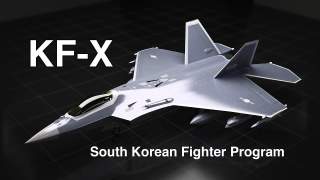South Korea Is Working on a Stealth Fighter
Be skeptical. The world’s biggest economies barely can support the development and acquisition of a true radar-evading fighter. South Korea is unlikely to join that exclusive club.
South Korea has joined Japan and Turkey in the group of middle powers that all are trying to develop unique stealth fighters.
Be skeptical. The world’s biggest economies barely can support the development and acquisition of a true radar-evading fighter. South Korea is unlikely to join that exclusive club.
“The biggest homegrown weapons development project in Korean history is about to take off as Seoul begins production for its new cutting-edge, multi-role fighter jets known as the KFX,” Korea Joongang Daily reported on Oct. 2, 2019.
“The design for the KFX, which stands for ‘Korean Fighter Experimental,’ is the result of almost two decades of planning that cost the government approximately 8.6 trillion won ($7 billion),” the newspaper continued. “Once production begins on 120 units of the new jet, which is scheduled to start in 2026, an additional 10 trillion won will be needed, putting the bill for the entire project at around 18.6 trillion won,” or $16 billion.
If Korea Joongang Daily’s figures are accurate, each KFX could cost around $130 million. That’s slightly more than a U.S.-made F-35 costs in 2019. But there are reasons to doubt Korean industry can get the price of a KFX down that low.
The main reason is scale. The only reason that an F-35 costs only around $100 million is that Lockheed Martin and its partners are building thousands of the single-engine planes for dozens of countries.
It’s likely the KF-X would end up cost much, much more than Korea Joongang Daily reported. It takes around $100 billion in total to develop, build and operate a fleet of a few dozen stealth fighters, Japanese air force general Hideyuki Yoshioka recently asserted.
Japan, not coincidentally, has been developing a boutique stealth fighter that also appears to be going nowhere.
Lockheed built just 195 bigger F-22 stealth fighters for the U.S. Air Force between the late 1990s and 2011. Federal law prohibited the company from exporting the plane, so the program never achieved a meaningful economy of scale.
One result is that each F-22 setback taxpayers as much as $300 million, not counting ongoing upgrades and operating costs that could boost the overall program cost to, you guessed it, nearly $100 billion.
Likely the only way South Korea could buy KFXs for $100 million apiece is if a lot of other countries also buy KFXs. But the F-35 so far is the only stealth fighter with export customers. Indeed, the F-35 has all but cornered the market for radar-evading fighters among countries with reasonably healthy diplomatic ties to the United States.
Russia meanwhile is the only customer for its troubled Su-57 stealth fighter. China so far is the only customer for its own J-20 stealth fighter. There aren’t many countries that are unwelcome in the F-35 program, also are allies with Russia or China and can afford stealth fighters.
Turkey might be an exception. Ankara was in the process of receiving F-35s when its insistence on buying Russian air-defense systems compelled Washington to cancel the stealth-fighter sale.
But Turkey is trying to develop its own stealth fighter. Turkish Aerospace Industries revealed a mockup of the new jet at the Paris Air Show in June 2019. TAI CEO Temel Kotil claimed, somewhat incredibly, that the fighter would fly by 2025.
The TF-X is an example of what Teal Group analyst Richard Aboulafia calls “national fighter concepts” – that is, advanced combat aircraft tailored to the needs of a single country and lacking strong export potential.
“National fighter concepts are almost always a very bad idea,” Aboulafia said. Examples include Israel’s Lavi, an overpriced Czech fighter-bomber called the L-159 and, most catastrophically, India’s Light Combat Aircraft, which spent 30 years in development, consuming billions of dollars before finally producing a rudimentary lightweight fighter in 2011.
Right now the TF-X is all plywood, paint and bold claims. It’s likely to remain so. The KFX for its part exists only on blueprints.
“According to Ryu Kwang-soo, head business manager of the KFX project at Korea Aerospace Industries -- the project’s main developer, around 9,300 out of the approximately 12,000 detailed blueprints needed for the KFX project are complete -- 78 percent of the project, including key components,” Korea Joongang Daily reported.
The Defense Acquisition Program Administration, South Korea’s arms procurement agency, concluded a three-day critical review of the jet’s design in early October 2019 and gave its final approval. “Production of a prototype model begins this month,” Korea Joongang Daily claimed.
It’s one thing to build a stealth-fighter prototype. In a world where the F-35 exists and a new radar-evading jet program typically costs at least $100 billion, it’s quite another to complete development and acquire more than 100 of the planes.
Don’t hold your breath for the KF-X.
David Axe serves as Defense Editor of the National Interest. He is the author of the graphic novels War Fix, War Is Boring and Machete Squad.

